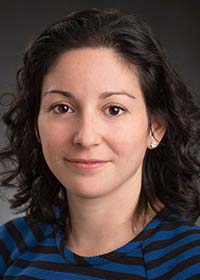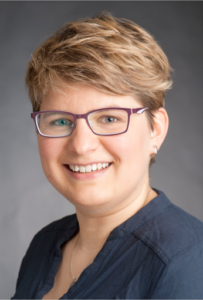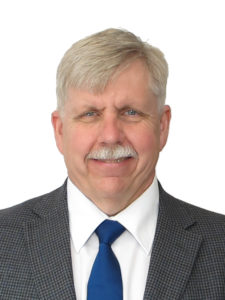Archive pour July 2020
Dr. Marie Hudson is a rheumatologist, epidemiologist, and Assistant Professor in the Department of Medicine at McGill University. She is a physician-scientist and member of the Center for Clinical Epidemiology and Community Studies at the Jewish General Hospital. She is a fellow of the Royal College of Physicians of Canada and is funded as a New Investigator by the Canadian Institutes of Health Research (CIHR).
Major Research Activities
She is the recipient of the 2011 Canadian Rheumatology Association Young Investigator Award.
Recent PublicationsHudson M, Fritzler MJ, Baron M. Systemic sclerosis: Establishing diagnostic criteria. Medicine (Baltimore) 2010; 89(3): 159-65.
Hudson M, Thombs BD, Steele R, Panopalis P, Newton E, Baron M, Canadian Scleroderma Research Group. Health-related quality of life in Systemic Sclerosis: A systematic review. Arthritis Rheum 2009; 61(8): 1112-20.
Senior Investigator, Centre for Clinical Epidemiology, Lady Davis Institute
Associate Professor, Department of Oncology, Department of Epidemiology, Biostatistics and Occupational Health, and Division of Cancer Epidemiology, McGill University
Celia MT Greenwood, Shuying Sun, Justin Veenstra, Nancy Hamel, Bethany Niell, Stephen Gruber, William D Foulkes (2010). How old is this mutation? A study of three Ashkenazi Jewish founder mutations. BMC Genetics 11:39.
Junior Scientist, RI-MUHC , Montreal General Hospital
Translational Research in Respiratory Diseases Program
Centre for Innovative Medicine
Assistant Professor, Department of Medicine, Faculty of Medicine, McGill University
Department of Medicine, Division of Respiratory Medicine, MUHC
My research focuses on interstitial lung diseases (ILD), a group of progressive, devastating lung diseases characterized by inflammation and scarring (fibrosis) of the lung tissue. The burden of disease is heavy: idiopathic pulmonary fibrosis, the most devastating form of ILD, has a median survival of only three to five years. The incidence and societal burden of ILD are increasing over time. Unfortunately, the right diagnosis is often initially missed or delayed, which will affect long term prognosis. Certain medications have been shown to slow the decline in lung function, but differences in treatment initiation can occur for reasons that remain largely unknown. My research program aims to identify discrepancies and delays in the care of patients with ILD from diagnosis to management, identify the risk factors for those delays, predict disease progression and explore the use of certain medications in understudied populations.
Selected Publications
Click on  to see my current pub
to see my current pub
Scientist seeking to employ my hands-on extensive research experience in infectious diseases, vaccines and autoimmunity in the healthcare industry.
- Independent researcher with strong communication, writing and people managements skills
- Multi-tasker-management of different research projects, training of graduate students along
with paperwork required to maintain compliance with institutional research animal care
regulations. - Clinically oriented research experience places me in a unique position to interact effectively
with both clinicians and scientists from diverse backgrounds including immunology,
dermatology, rheumatology, gastroenterology and allergy specialists. - Enthusiastic learner and ready to take on high risk projects.
Burlington, Ontario, May 27, 2019 – Results from a pivotal Phase III SENSCIS® trial met its primary endpoint: reduction in the annual rate of decline in forced vital capacity (FVC) in patients with systemic sclerosis associated interstitial lung disease (SSc-ILD). Interstitial lung disease (ILD) is a key driver of mortality in people living with systemic sclerosis (SSc) – also known as scleroderma – and the absence of treatment options constitutes a high unmet need.
Results show that nintedanib slows the loss of pulmonary function in patients with SSc-ILD compared to placebo. Patients taking nintedanib showed a 44% reduction in the rate of decline of their lung function, measured in FVC assessed over 52 weeks. These new data were published in the New England Journal of Medicine (NEJM) and presented simultaneously to the medical community at the American Thoracic Society (ATS) International Conference on May 20th in Dallas.
2017 Teacher-Educator Award
Dr. David Robinson completed his BSc at the University of Winnipeg, and his MSc in Physiology at the University of Manitoba. He then completed medical school, internal medicine training and rheumatology training at the University of Manitoba. Following that he started work as a Rheumatologist at the University of Manitoba.
As a clinician educator David has a large tertiary care practice. In addition to clinical teaching, he has held a number of education positions including Postgraduate Program Director for 10 years and Undergraduate Medical Director for Rheumatology at the University of Manitoba for more than 15 years. He has been active in CME activities as well as public education through the Arthritis Society. He has served as Vice-chair of the Royal College Specialty Committee for Rheumatology for 6 years and following that has been Chair of the Committee since 2012.
In addition to teaching, David is a member of both the Canadian Scleroderma Research Group and Canadian Network on Research in Vasculitides. He also has a great interest in rheumatic diseases in First Nations. This involves outreach clinics in Northern Manitoba caring for First nations patients. In collaboration with his colleagues in Manitoba, David is also involved in research on the etiology and outcomes of rheumatic disease in First Nations.
Eighth Quarter Report – May 2019
This Project is a hypothesis-generating study for the control of lung damage in patients with idiopathic pulmonary fibrosis (IPF) and both lung and skin damage in systemic scleroderma (SSc) patients either with or without interstitial lung disease (ILD). Enrolment of SSc patients with and without ILD to provide blood and skin tissue samples was completed during the first quarter at the end of August 2017 with samples stored in The Scleroderma Biobank at St. Paul’s Hospital in Vancouver. Enrolment of patients with IPF and normal controls was completed by mid-November 2017. Skin-fibroblast extraction and growth from skin samples (from all but the IPF patients from whom no skin samples were taken due to ethical reasons as their skin is not affected) were completed and stored in the Biobank before the Christmas 2017 break. With some extra efforts by laboratory staff, extraction of miRNA from all five tissue types was completed by mid-April 2018 but miRNA extraction was not sufficient in the fifth tissue for whole genome sequencing (WGS) without additional processing by the laboratory and so this was placed on indefinite hold due to cost. A sixth tissue remains stored in the Biobank because its miRNA can be amplified for miRNA WGS but at additional cost.
After receiving frozen tissue-samples from the laboratory at St. Paul’s Hospital on 16 May 2018, the British Columbia Genome Sciences Centre (BCGSC) provided miRNA sequencing data on 92 samples on 26 July 2018, another 92 samples on 7 Aug 2018, and the last 92 samples on 2 Jan 2019. All 276 samples comprise 3 tissue-types, with some duplicates, from 11 limited SSc-ILD patients, 12 diffuse SSc-ILD patients, 9 patients with limited SSc only, 5 patients with diffuse SSc only, 19 patients with IPF, and 16 control participants. Quality control assessments on the last 92 samples were completed on 17 Feb 2019, at which point the Project was eight months behind schedule. As of 21 May 2019, the list of novel miRNA’s in the 3 tissue-types has yet to be received from BCGSC so the Project is eleven months behind schedule and counting. Nevertheless, March 2019 saw the start, in earnest, of comprehensive statistical analysis of the miRNA WGS data inclusive of seeking to generate hypotheses for the role of known miRNA’s in lung and skin damage (and in particular, calcium deposits in the skin). While the details of the results cannot be presented until completion of independent review by other scientists, the results have been judged so successful by the scientific research team that recruitment of a second cohort of patients and controls has already begun in order to verify the results that have been found thus far. We look forward to seeing how the novel miRNA’s fit into the picture and are eager to receive this data. Results will be made available the SABC membership and general public as soon as they emerge from the scientific-review process.
University researchers involved in this project are Drs. James Dunne, Chris Ryerson, and Pearce Wilcox of The University of British Columbia and Dr. Kevin Keen of both The University of British Columbia and The University of Northern British Columbia. Rounding out the Leadership Team are Ms. Rosanne Queen and Mr. Robert Buzza for the Scleroderma Association of BC.
Seventh Quarter Report – February 2019
This Project is a hypothesis-generating study for the control of lung damage in patients with idiopathic pulmonary fibrosis (IPF) and both lung and skin damage in systemic scleroderma (SSc) patients either with or without interstitial lung disease (ILD). Enrolment of SSc patients with and without ILD to provide blood and skin tissue samples was completed during the first quarter at the end of August 2017 with samples stored in The Scleroderma Biobank at St. Paul’s Hospital in Vancouver. Enrolment of patients with IPF and normal controls was completed by mid-November 2017. Skin-fibroblast extraction and growth from skin samples (from all but the IPF patients from whom no skin samples were taken due to ethical reasons as their skin is not affected) were completed and stored in the Biobank before the Christmas 2017 break. With some extra efforts by laboratory staff, extraction of miRNA from all five tissue types was completed by mid-April 2018 but miRNA extraction was not sufficient in the fifth tissue for whole genome sequencing (WGS) without additional processing by the laboratory and so this was placed on indefinite hold due to cost. A sixth tissue remains stored in the Biobank because its miRNA can be amplified for miRNA WGS but at additional cost.
After receiving frozen tissue-samples from the laboratory at St. Paul’s Hospital, on May 16 2018, the British Columbia Genome Sciences Centre (BCGSC) provided miRNA sequencing data on 92 samples on July 26 2018, another 92 samples on August 7 2018, and the last 92 samples on January 2 2019. Quality control assessments on the last 92 samples were completed on February 17 2019, at which point the Project was eight months behind schedule. All 276 samples comprise three tissue-types, with some duplicates, from 11 limited SSc-ILD patients, 12 diffuse SSc-ILD patients, 9 patients with limited SSc only, 5 patients with diffuse SSc only, 19 patients with IPF, and 16 control participants. A limited experiment with 4 samples and 2 different tissues to examine a new procedure for amplifying miRNA for WGS was initiated in December 2018 with promising results in late February 2019, inclusive of a cross-comparison with the expression of 750 miRNA’s as measured on the NanoString platform in October 2018 for 3 different tissue types. The third tissue type examined on the NanoString platform in October was blood serum for the purpose of verifying 3 different methods for preparing serum. The least expensive method for blood serum was deemed the best for NanoString.
March 2019 will see the start, in earnest by researchers, of comprehensive statistical analysis of the miRNA WGS data inclusive of seeking to understand the role of miRNA’s in skin damage and calcinosis.
University researchers involved in this project are Drs. James Dunne, Chris Ryerson, and Pearce Wilcox of The University of British Columbia and Dr. Kevin Keen of both The University of British Columbia and The University of Northern British Columbia. Rounding out the Leadership Team are Ms. Rosanne Queen and Mr. Robert Buzza for the Scleroderma Association of B.C.
Sixth Quarter Report – November 2018
This Project is a hypothesis-generating study for the control of lung damage in patients with idiopathic pulmonary fibrosis (IPF) and lung and skin damage in systemic scleroderma (SSc) patients with or without interstitial lung disease (ILD). Enrolment of SSc patients with and without ILD to provide blood and skin tissue samples was completed during the first quarter at the end of August 2017 with samples stored in The Scleroderma Biobank at St. Paul’s Hospital in Vancouver. Enrolment of patients with IPF and normal controls was completed by mid-November 2017. Skin-fibroblast extraction and growth from skin samples (from all but the IPF patients from whom no skin samples were taken due to ethical reasons as their skin is not affected) were completed and stored in the Biobank before the Christmas 2017 break. With some extra efforts by laboratory staff to harvest sufficient miRNA for two of the tissues, extraction of miRNA from all five tissue types was completed by mid-April 2018 but miRNA extraction was not sufficient in the fifth tissue for whole genome sequencing (WGS) without additional processing by the laboratory and so this was placed on indefinite hold due to cost. A sixth tissue remains stored in the Biobank because its miRNA cannot be amplified for miRNA WGS, also for cost reasons, but will be analyzed by NanoString miRNA expression chemistry.
After receiving frozen tissue-samples from the laboratory at St. Paul’s Hospital on May 16 2018, the British Columbia Genome Sciences Centre (BCGSC) provided miRNA sequencing data on 92 samples on July 26 2018 and another 92 samples on August 7 2018. After completing quality control checks for miRNA sequencing for these 184 samples in mid-November and combining a few samples, a further 13 tissue- samples were shipped on November 27 2018 to BCGSC to complete the third set. All 276 samples comprise 3 tissue-types, with some duplicates, from 11 limited SSc-ILD patients, 12 diffuse SSc-ILD patients, 9 patients with limited SSc only, 5 patients with diffuse SSc only, 19 patients with IPF, and 16 control participants. Progress has been affected by vacations understandably taken by laboratory staff during August and November. All will be taking vacations in December. It is expected to receive the miRNA sequences for the last 92 samples and to complete all quality control checks by the end of January 2019.
After training of laboratory staff, two cartridges were processed as a developmental test of the NanoString platform for miRNA expression analysis in October. The first cartridge failed due to a manufacturing defect and a second replacement cartridge plus reagents were provided by NanoString at no extra cost but the samples on the first cartridge were unfortunately lost. The NanoString technology was successfully validated on 3 tissue types in samples from 3 participants, inclusive of verifying 3 different methods for preparing samples of blood serum. Ironically, the least expensive method for blood serum was deemed the best for NanoString.
University researchers involved in this project are Drs. James Dunne, Chris Ryerson, and Pearce Wilcox of The University of British Columbia and Dr. Kevin Keen of both The University of British Columbia and The University of Northern British Columbia. Rounding out the Leadership Team are Ms. Rosanne Queen and Mr. Robert Buzza for the Scleroderma Association of B.C.
Fifth Quarter Report – August 2018
This Project is a hypothesis-generating study for the control of lung damage in patients with idiopathic pulmonary fibrosis (IPF) and lung and skin damage in systemic scleroderma (SSc) patients both with and without interstitial lung disease (ILD). Enrolment of SSc patients with and without ILD to provide blood and skin tissue samples closed ahead of schedule during the first quarter by the end of August 2017 with samples stored in The Scleroderma Biobank at St. Paul’s Hospital in Vancouver. Enrolment of patients with idiopathic pulmonary fibrosis (IPF) and normal controls was completed by the middle of November. Skin fibroblast extraction and growth from skin samples (from all but the IPF patients from whom no skin samples were taken due to ethical reasons as their skin is not affected) were completed by the laboratory at St. Paul’s and stored in the Biobank before the Christmas 2017 break. Extra efforts were required by laboratory staff to harvest sufficient miRNA for two of the tissues, which doubled the time required for extraction but not for much-added cost in terms of purchasing reagents and other consumables. Extraction of miRNA from all five tissue types was completed by mid-April 2018 but miRNA extraction was not sufficient in the fifth tissue for whole genome sequencing (WGS) without additional processing by the laboratory and so this was placed on indefinite hold due to cost. A sixth tissue remains stored in the Biobank because its miRNA cannot be amplified for miRNA WGS, also for cost reasons, but will be analyzed by Nanostring miRNA expression chemistry.
The laboratory at St. Paul’s Hospital transferred 275 frozen tissue samples to the British Columbia Genome Sciences Centre (BCGSC) on May 16 2018, where these were entered in the queue for WGS analysis. On July 26 2018, processed miRNA sequence data from 92 duplicate samples of whole blood comprising 11 patients with both limited SSc and ILD, 19 patients with IPF, and 16 control participants was downloaded from BCGSC and quality control checks were commenced by the Project team. Raw miRNA sequence data for these samples were downloaded from BCGSC on August 7 2018 with quality control checking continuing until mid-August and then suspended due to vacations.
The original design called for miRNA WGS analysis on three tissue types and Nanostring miRNA expression analysis on four tissue types. This experimental design had to be altered because two more tissues were added and miRNA WGS analysis can only be done on three of the four original tissue types. Nanostring analysis requires one-tenth the amount of miRNA. There is ample miRNA for Nanostring analysis for five tissue types. In June, there was to be a developmental run using Nanostring for one tissue type from each of four patients with SSc-ILD, four patients with IPF, and four controls but this and WGS miRNA for the remaining 184 duplicate samples has been delayed until October pending completion of the quality control assessments.
University researchers involved in this project are Drs. James Dunne, Chris Ryerson, and Pearce Wilcox of The University of British Columbia and Dr. Kevin Keen of The University of Northern British Columbia.
Dr. Linda Kwakkenbos
Co-Director of SPIN
Dr. Linda Kwakkenbos is the Co-Director of the Scleroderma Patient-centered Intervention Network (SPIN). After completion of her PhD in Social Science at Radboud University, the Netherlands, in the summer of 2012, Dr. Kwakkenbos started working with Dr. Brett Thombs at McGill University. She initially coordinated the SPIN project, and was later named Co-Director. Linda manages the project on a day-to-day basis with Dr. Brett Thombs and Marie-Eve Carrier.
Dr. Kwakkenbos is currently a Lecturer and Researcher at the Behavioural Science Institute of Radboud University. She teaches in a number of courses in the Psychology Bachelor and Master programs, including research, communication and diagnostic skills trainings. Dr. Kwakkenbos’ research focuses on the development and testing of patient-reported outcome measures, novel research methodologies, and the development of interventions that help contribute to better disease management in chronic diseases, focusing on rare diseases.
To support her work in SPIN, Linda received a Post-doctoral Fellowship from the Fonds de la Recherche en Santé Québec (FRSQ; 2013-2015) and was awarded the prestigious Banting Postdoctoral Fellowship from the Canadian Institutes of Health Research (CIHR; 2015-2017).
The SPIN team consists of professionals with a wide variety of backgrounds, patient advocates, trainees, and support staff. For more information about these individuals, please click the following link: https://spinsclero.com/en/teams-committees
Biography
Jean-Luc Senécal, MD, FRCPC, is a rheumatologist and member of the CHUM’s Rheumatology department. He holds the Scleroderma Research Chair at the University of Montreal.
Dr. Senécal specializes in the diagnosis and treatment of human systemic autoimmune diseases, such as scleroderma (systemic sclerosis), systemic lupus erythematosus and autoimmune myositis.
His fundamental research focuses on elucidating the pathophysiological mechanisms underlying these diseases and identifying new treatments.
Theme
Immunopathogenesis and new therapeutic approaches to human systemic autoimmune diseases.
Research topics
- Identification, characterization and clinical significance of autoantibodies associated with human systemic autoimmune diseases: scleroderma, systemic lupus erythematosus (SLE) and autoimmune myositis.
- Molecular mechanisms involved in the immunopathogenesis of these diseases.
- Development of experimental models of scleroderma.
- New therapies for scleroderma.
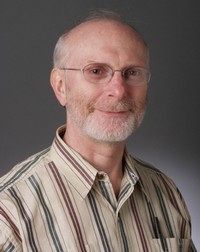
Senior Investigator, Lady Davis Institute
Chief, Division of Rheumatology, Jewish General Hospital
Director of the Canadian Scleroderma Research Group
Associate Professor of Medicine, McGill University
Dr. Baron’s Publications Indexed on PubMed
Dr. Murray Baron is the chief of the Division of Rheumatology at the Jewish General Hospital, where he has practiced since 1981. He graduated from McGill University’s Faculty of Medicine and, after stints as a family doctor in Newfoundland and British Columbia, trained in internal medicine at the University of British Columbia and rheumatology at the University of Toronto. He is an Associate Professor of Medicine at McGill University.
He runs a division with five full-time academic rheumatologists and one part-time rheumatologist, which is similar to the numbers at the McGill University Health Centre, McGill’s other teaching hospital. In the last three years, three new rheumatologists have been hired, including Dr. Marie Hudson who is a full-time academic. Among the other rheumatologists, one has a strong interest in medical education, another in the use of musculoskeletal ultrasound as a diagnostic tool, and
a third in the use of videocapillaroscopy as a clinical and research tool in the rheumatic diseases. In addition, Dr. Brett Thombs, an academic psychologist from the department of psychiatry, has a cross appointment in rheumatology.
Major Research Activities
Dr. Baron’s primary research interest is in an uncommon rheumatic disease called scleroderma. In this disease, there is fibrosis of multiple organs leading to severe morbidity and increased mortality. Because the disease is rare, Dr. Baron has established the Canadian Scleroderma Research Group (CSRG). Over 15 rheumatologists from across Canada see patients once a year and enter a large amount of data into a central database. Biological specimens, such as blood and skin, are also collected. Research is performed on the data by clinical researchers at McGill and elsewhere, and on the bio-specimens at multiple laboratories that Dr. Baron has brought into his group.
Since its inception in 2004, over $4.5 million dollars has been brought in from peer review agencies by Dr. Baron and his colleagues in the CSRG. More than 60 articles have been published in the scientific literature since the CSRG was formed. The CSRG, under Dr. Baron’s direction, has become a well recognized leader in scleroderma research in the world.
In addition, Dr. Baron has established the McGill Early Arthritis Registry that has performed research on recent onset inflammatory arthritis. Much of the work in this area will be turned over to one of the new rheumatology recruits, Dr. Sabrina Fallavollita.
He has also created CANCoRC, the Canadian Consortium of Rheumatology Cohorts, in an attempt to strengthen Canadian rheumatology research by seeking common funding and identifying commonalities across rheumatic disease research teams.
Recent Publications
Schieir O, Thombs BD, Hudson M, Boivin JF, Steele R, Bernatsky S, Hanley J, Baron M. Prevalence, severity, and clinical correlates of pain in patients with systemic sclerosis. Arthritis Care Res (Hoboken) 2010;62:409-17.
Fan X, Pope J, Baron M. What is the relationship between disease activity, severity and damage in a large Canadian systemic sclerosis cohort? Results from the Canadian Scleroderma Research Group (CSRG). Rheumatol Int 2010;Sep 24. 2009 [Epub ahead of print].
Baron M, Bernier P, Côté L, DeLegge M, Falovitch G, Friedman G, Gornitsky M, Hoffer J, Hudson M, Khanna D, Paterson W, Schafer D, Toskes P. Screening and Therapy for Malnutrition and Related Gastro-Intestinal Disorders in Systemic Sclerosis: Recommendations of a North American Expert Panel. Clin Exp Rheumatol 2010;In Press.

Senior Investigator and Biostatistician, Centre for Clinical Epidemiology, Lady Davis Institute
Associate Professor, Department of Mathematics and Statistics, McGill University
Dr. Steele’s Publications Indexed on PubMed
Dr. Russell J. Steele is an Associate Professor in the Department of Mathematics and Statistics at McGill University and a Research Investigator in the Centre for Clinical Epidemiology at the Jewish General Hospital. He received his PhD in statistics from the University of Washington in 2002 and began collaborating with researchers at the Jewish General Hospital soon after arriving to McGill. He has not only published papers in statistics journals, but also made important contributions to research in rheumatology, sports medicine, cancer, cardiovascular treatments, and epidemiology. He has a deep interest in applied statistics, in particular collaborating with researchers in other disciplines to improve the state of statistical methods in their areas and to develop new approaches to analyzing data.
Major Research Activities
Dr. Steele’s primary statistical research interests are in the analysis of missing data and model selection using computationally intensive Bayesian approaches. Dr. Steele also has worked on problems in applying statisics to other fields, particularly applications in medical and population health research. He is a member of the Canadian Scleroderma Research Group (CSRG) and has collaborated closely with several physicians on problems related to analyzing data from the CSRG patient registry. He has also worked on epidemiology methodological problems relating to meta-analysis and the analysis of sports injury data.
Recent Publications
Steele, R.J., Wang, N., and Raftery, A.E. Inference from Multiple Imputation for Missing Data Using Mixtures of Normals, Statistical Methodology (7) 351–365 (2010).
Hudson, M., Impens, A., Baron, M., Siebold, J.R., Thombs, B.D., Walker, J.G., CSRG, and Steele, R. Discordance between Patient and Physician Assessments of Disease Severity in Systemic Sclerosis, Journal of Rheumatology. To appear. (2010).
Shrier, I., Steele, R.J., Hanley, J., Rich, B. Analyses of injury count data: some dos and some donts, American Journal of Epidemiology (170) pp. 1307–15 (2009).
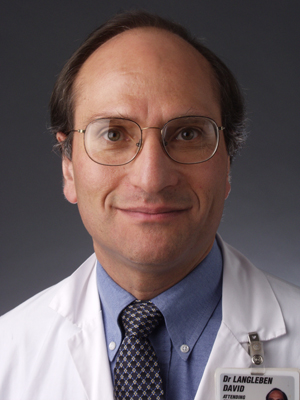
Senior Investigator, Lady Davis Institute
Professor of Medicine, McGill University
Director, Cardiology Division, Jewish General Hospital
Director, Centre for Pulmonary Vascular Disease
Dr. Langleben’s Publications Indexed on PubMed
Dr. David Langleben is a Professor of Medicine at McGill University. He is the Director of the Cardiology Division of the Jewish General Hospital, and founded and directs the Centre for Pulmonary Vascular Disease, an internationally recognized resource for patient care, teaching, and research. He is a Project Director at the Lady Davis Institute for Medical Research.
Dr. Langleben’s research focuses on the vascular biology of pulmonary hypertension. He has studied endothelial dysfunction in the disorder, at the cellular, organ, and whole-body level. He and his colleagues were the first to identify endothelin-1 as a mediator in pulmonary hypertension. Over the following 20 years, this discovery led to the development of several approved therapies that have benefitted thousands of patients. His group has gone on to study the clearance of endothelin-1 in pulmonary hypertension and to examine mechanisms that control its synthesis. Recent work has focused on the effects of bone morphogenic proteins and other members of the transforming growth factor-β family of molecules on the control of endothelin-1 production.
Another major focus has been to measure the degree of loss of lung microvessels in pulmonary hypertension and to assess its impact on prognosis, response to therapy, and exercise capacity. With his colleagues, he has adapted for human use techniques originally developed for animal experiments. These human studies have provided definitive assessments of the restricted pulmonary bed in pulmonary hypertension and have provided the first mechanistic insights for the physiologic abnormalities in the disease. Current studies are examining changes in vascular surface area in response to vasodilators, and studies in exercising patients will begin shortly.
At the Centre for Pulmonary Vascular Disease, Dr. Langleben is the principal investigator in many clinical trials of novel therapies for pulmonary hypertension. He sits on several scientific advisory boards that design and direct major international clinical trials.
Major Research Activities
– Studying the control of endothelin-1 production by pulmonary microvascular endothelial cells in conditions simulating pulmonary hypertension.
– Measuring pulmonary vascular surface area in pulmonary hypertension and studying the effects of exercise and medications.
– Measuring novel mediators in pulmonary hypertension and studying factors that affect clinical outcomes.
Recent Publications
Langleben D, Orfanos SE, Giovinazzo M, Hirsch A, Baron M, Senecal JL, Armaganidis A, Catravas JD. Pulmonary capillary endothelial dysfunction: Severity in pulmonary arterial hypertension related to connective tissue disease versus idiopathic pulmonary arterial hypertension. Arthr Rheumatism 2008;58:1156-1164.
Star GP, Giovinazzo M, Langleben D. Bone morphogenic protein-9 stimulates endothelin-1 release from human pulmonary microvascular endothelial cells. A potential mechanism for elevated ET-1 levels in pulmonary arterial hypertension. Microvasc Res 2010;80:349-354.
Fox BD, Shimony A, Langleben D. Meta-analysis of monotherapy vs. combination therapy for pulmonary arterial hypertension. Am J Cardiol 2011; in press.

Research Director, Department of Dentistry, Jewish General Hospital
Chief Emeritus, Department of Dentistry, Jewish General Hospital
Professor Emeritus, Faculty of Dentistry, McGill University
Dr. Gornitsky’s Publications Indexed on PubMed
Dr. Mervyn Gornitsky is Research Director of the Department of Dentistry at the Jewish General Hospital. He is a Professor Emeritus at McGill University, Faculty of Dentistry, and Chief Emeritus of the Department of Dentistry at the Jewish General Hospital. Dr. Gornitsky’s distinguished careers in academic dentistry and oral and maxillofacial surgery have spanned over 50 years. He has contributed more than anyone in Canada to the development of departments of dentistry in Canadian hospitals. He was chair of the Hospital Dental Services Committee for Quebec for 15 years and Chair of the Council on Hospital Dental Services for the Canadian Dental Association for six years.
Dr. Gornitsky was granted a fellowship at the inception of the examination by the Royal College of Dentists of Canada in Oral and Maxillofacial Surgery in 1967. He is a fellow of the American College of Dentists, the International College of Dentists, L’Academie dentaire du Quebec, and a member of the Pierre Fauchard Academy.
Major Research Activities
Dr. Gornitsky is the director of the JGH Databank for Saliva Specimens, located at the LDI. Currently his research themes focus on the discovery of salivary biomarkers in Parkinson’s disease and other neurological conditions, and the biomarkers and treatment of painful temporomandibular disorders and sleep apnea.
In the past, Dr. Gornitsky’s team has completed epidemiologic studies associated with facial pain and bruxism, periodontal diseases in HIV positive and AIDS patients, xerostomia in patients undergoing radiotherapy for head and neck cancer, as well as the effects of oxidative stress on saliva. The latter focused on oxidative damage to lipids, proteins and DNA, in addition to total oxidative capacity as markers for various diseases, such as periodontitis, scleroderma, diabetes, Alzheimer’s disease, and breast cancer.
Recent Publications
Song W, Kothari V, Velly A, Cressati M, Liberman A, Gornitsky M, Schipper HM. “Evaluation of Salivary Heme Oxygenase-1 as a Potential Biomarker of Early Parkinson’s Disease.” Movement Disorders. Accepted December 22, 2017.
Baron M, Hudson M, Dagenais M, Macdonald D, Gyger G, El SayeghT, Pope J, Fontaine A, Masetto A, Matthews D, Sutton E, Thie N, Jones N, Copete M, Kolbinson D, Markland J, Nogueira-Filho G, Robinson D, Fritzler M, Wang M, Gornitsky M. “Relationship Between Disease Characteristics and Oral Radiologic Findings in Systemic Sclerosis: Results From a Canadian Oral Health Study.” Arthritis Care & Research. 2016 May:68(5):673-680.
Gornitsky M, Velly AM, Mohit S, Almajed M, Su H, Panasci L, Schipper HM. “Altered Levels of Salivary 8-oxo-7-hydrodeoxyguanosine in Breast Cancer.” JDR Clinical & Translational Research. 2016 April;1:171-177. doi: 10.1177/2380084416642197.
Wang J, Schipper HM, Velly AM, Mohit S, Gornitsky M. “Salivary Biomarkers of Oxidative Stress: a Critical Review”. Free Radical Biology and Medicine 2015; 85:95–104 (Corresponding author).
Status: Active
Competition: 2017 Bioinformatics and Computational Biology Competition
Sector: Health
Genome Centre(s): Génome Québec
Project Leader(s): Celia Greenwood (Lady Davis Institute for Medical Research), Karim Oualkacha (Université du Québec à Montréal)
Project Description:
DNA methylation refers to the attachment of a methyl molecule to our DNA. This chemical binding makes the DNA inaccessible, and provides a mechanism to influence which parts of the DNA are active or inactive. Since DNA methylation can vary across cell types, with disease, with exposures to contaminants, and with other factors such as genetic factors and age, many clinicians and researchers are excited to identify which parts of the genome are associated with certain diseases or exposures. This could be used to understand mechanisms of disease and to provide potential targets of intervention. for these reasons, there is increasing interest to study DNA methylation in scleroderma.
It has recently become technically and financially feasible to perform single nucleotide-resolution measurement of DNA methylation on a large scale across the genome, using a method called bisulfite sequencing. However, the data are noisy and many measures can be missing. Appropriate methods of analysis for this voluminous and highly correlated data are currently unsatisfactory.
We have assembled a team of experts including leading methodological statisticians, scientific researchers in several domains such as scleroderma, as well as asthma and behavioural development, and experienced bioinformaticians. Together we will develop an algorithm and software package to analyze large scale, high dimensional DNA methylation data so that we can profit from the potential hidden in the messy data. We have already a prototype method in place that shows excellent performance.
Strong support for the ideas in our study have been obtained from patient-led associations including Scleroderma Quebec, and also from two Montreal companies, one that develops machine learning methods and the other that provides a high-performance computational platform. Leading epigenetic researchers and consortia have also expressed their interest in our research. Understanding of epigenetic contributions to disease will be revolutionized through this project.
Dr. Wilcox is a respirologist at St. Paul’s Hospital and Professor of Medicine at The University of British Columbia (UBC). He graduated from Medical School at Queen’s University, Kingston, Ontario in 1980, did his Internal Medicine Residency at the University of Western Ontario from 1980-83 and his Fellowship in Respirology at UBC in 1983-86. He is also certified by the American Board of Internal Medicine. Dr. Wilcox is the Medical Director of the Providence Health Care Pulmonary Function Laboratory at St. Paul’s Hospital and a Co-Director of the Scleroderma Respiratory Clinic. He is the Medical Director for the UBC Adult Cystic Fibrosis Program based at St. Paul’s Hospital. He is associated with The James Hogg Research Centre at St. Paul’s Hospital and the UBC Institute of Heart and Lung Health. He is a member of the Canadian Thoracic Society Executive Committee, currently Past President. His research interests include clinical research in cystic fibrosis as well as pulmonary manifestations of connective tissue disorders.
Dr. Chris Ryerson completed his core clinical training at the University of British Columbia and an interstitial lung disease (ILD) fellowship and Masters degree in clinical research at the University of California San Francisco before joining UBC faculty in 2011. He is an Associate Professor at UBC, director of the St. Paul’s Hospital ILD clinical and research program, and Head of the Division of Respiratory Medicine at Providence Health Care. His research focuses on management and prognostication of ILD. He is also involved in several national and international clinical practice guidelines on the diagnosis and management of fibrotic ILD.
Kevin J. Keen, Ph.D., is a Professor in the Department of Mathematics and Statistics at The University of Northern British Columbia and a Visiting Professor in the Department of Medicine at The University of British Columbia. He has held visiting appointments with the Netherlands Institute for Health Sciences (Erasmus University, Rotterdam) and the Faculty of Medicine at Leiden University. He has published more than thirty peer-reviewed articles in journals, two book chapters, and two editions of a textbook on statistical graphics. His research involves the development of novel statistical techniques and cutting-edge computer software for the analysis of multivariate data in the study of complex diseases. He is the co-author of articles on lung and skin involvement in scleroderma. Dr. Keen is accredited as a Professional Statistician (P.Stat.) by both the Statistical Society of Canada and the American Statistical Association (ASA) and is a Fellow of the Royal Statistical Society.
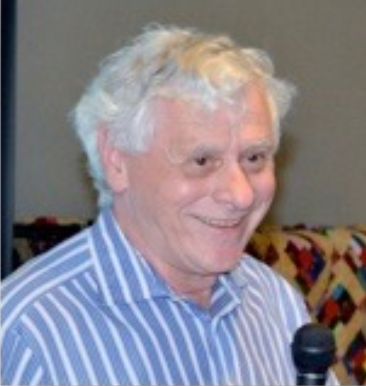
James V. Dunne, MB, FRCP(C), is currently on staff at St. Paul’s Hospital and Vancouver General Hospital in British Columbia, Canada. He is a Clinical Assistant Professor for the University of British Columbia’s Department of Medicine, and specializes in rheumatology. Scleroderma and fibromyalgia are also among Dr. Dunne’s clinical interests; he is a contributor to the book The Fibromyalgia Syndrome: A Clinical Case Definition for Practitioners. He has also been published in the journal Arthritis & Rheumatology, and other peer-reviewed journals. Dr. Dunne has the unique distinction of studying in four countries: Ireland, England, the United States (fellowship), and Canada.
Dr. Ada Man completed her Internal Medicine residency at the University of Toronto. She then undertook her Rheumatology residency at the University of British Columbia, and was the recipient of Gurmej Kaur Dhanda Scholarship awards for Systemic Sclerosis in 2011 & 2012. She spent two years in Boston, USA at the Boston University Scleroderma Research Center for a research fellowship with an emphasis on epidemiology research as applied to Systemic Sclerosis. Her research was focused on cardiovascular outcomes, interstitial lung disease progression, as well as patient reported outcome measures in Systemic Sclerosis. She and her team developed the SSPRO – Scleroderma Skin Patient Reported Outcome – which has been validated in Systemic Sclerosis patients, and will be used in clinical trials. She practices General Rheumatology with a special interest in Systemic Sclerosis at the Manitoba Clinic in Winnipeg, and is an Assistant Professor of Medicine and Community Health Sciences, Rady Faculty of Health Sciences, University of Manitoba. She is a member of the Canadian working group for stem cell transplant in Systemic Sclerosis.







